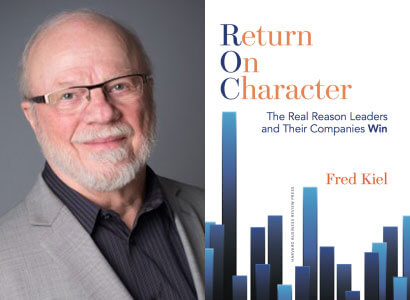What will associations be talking about most this year? Association management and services company SmithBucklin explores that question in its 16th annual Circuit publication. In addition to celebrating the organization’s 70th anniversary, the recently published special issue also outlines “20 for 2019” — 20 key trends, issues, and developments that will be crucial to associations throughout this year.
Convene combed through its pages to identify which of those trends are most likely to shape association events. Here are three:
Trend No. 2: The Benefits of Diversity and Inclusion
Although many organizations understand the importance of diversity and inclusion from a moral standpoint, “many don’t recognize it as an imperative from a business standpoint,” according to Circuit. And as the publication points out, a recent study conducted by Vetted Solutions revealed that 84 percent of associations focus on diversity and inclusion because they feel it’s “the right thing to do.” A little more than half (55 percent) of associations polled reported that they believe it made good business sense, and only 19 percent thought it helped profitability.
However, Circuit cites a 2018 study from McKinsey and Co. that found that companies with more gender-diverse executive teams were 21 percent more likely to experience above-average profitability, while those with more ethnic and cultural diversity were 33 percent more likely to outperform expectations.

Fed Kriel and his book, “Return on Character: The Real Reason Leaders and Their Companies Win”
Trend No. 4: The Character of Associations
According to Circuit, there is a growing body of research indicating that character can drive increased performance. This is particularly true among associations “where high-character leaders” are key to an organization’s long-term success.
Circuit references Fred Kiel’s book Return on Character: The Real Reason Leaders and Their Companies Win, which incorporated a seven-year leadership study by KRW International. “It found that the education, tenure, politics, age, career path, and gender of an organization’s executives did not factor into that organization’s return on assets.” In fact, organizations that had a strong character reputation in areas such as responsibility, integrity, and compassion, “significantly out-performed other organizations,” Circuit reports.
Trend No. 7: One Size Education Does Not Fit All
Chris Ballman, SmithBucklin’s director, education & learning services, provided recommendations on the best ways to disperse information to association members — ideas that are directly applicable to business event participants. There are two primary types of learning, he said, which can both be useful. The first type, microlearning, “involves bite-sized, easily digestible content about how to accomplish a specific task or attain a specific skill.”

Chris Ballman, SmithBucklin’s director, education & learning services
eLearning services company ej4 maintains that microlearning works best when segments are kept between nine and 11 minutes, as anything shorter decreases the chance of retention in adult learners. The power of microlearning, according to ej4, is that its short length allows extra time to reinforce the material through feedback sessions and quizzes post-presentation.
A case-study example of microlearning cited in Circuit: Apra, an association for fundraising professionals, shifted from a two-day symposium to online learning modules and a one-day meeting, based on member feedback that the two-day event was too long and lecture-focused.
The opposite type of effective learning is deep learning — “intensive deep-dives extended over a long period of time,” from hours to days, according to Circuit. “It typically focuses on larger and more complete skill areas,” such as mastering a computer program or understanding building-code compliance.
While microlearning might be better suited for preliminary educational offerings before an event or quick sessions on a show floor, and deep learning the best approach to take at targeted retreats, Ballman suggested that a mixture of both might be the key to successful learning, as switching the formats will maintain interest.
Regardless of the learning format offered, Circuit offers this piece of advice: “Stating an attainable goal at the beginning helps keep the audience focused on the learning at hand.”

